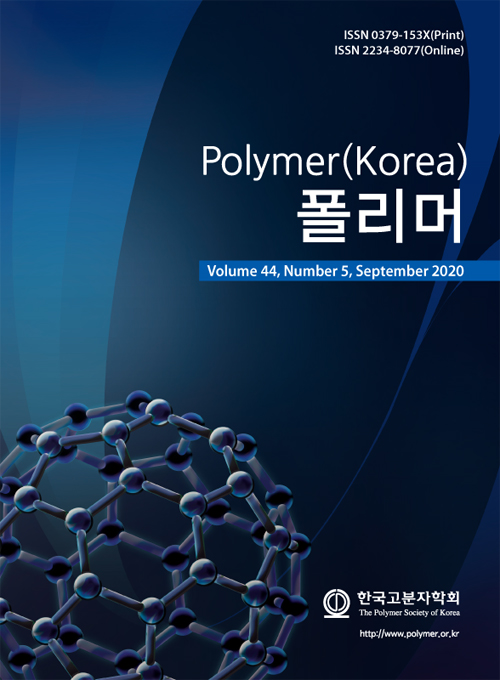- Compatibility and Impact Properties of Poly(lactic acid)/Poly(butylene adipate-co-terephthalate) Blend Using Poly(butyl acrylate)
Jae Bin Lee# , Do Young Kim# , KiBeom Nam, Kwan Ho Seo†
 , and Dong Yun Lee†
, and Dong Yun Lee† 
Department of Polymer Science and Engineering, Kyungpook National University, Daegu 41566, Korea
- Poly(butyl acrylate)를 포함하는 Poly(lactic acid)/Poly(butylene adipate-co-terephthalate) 블렌드의 상용성 및 충격 특성
경북대학교 응용화학공학부 고분자공학전공, 경북대학교 공과대학 고분자공학과
Poly(lactic acid) (PLA) is a biodegradable polymer, which has been
increased in usage due to strengthening environmental policy and increased
interest in sustainable plastics. However, it has inherent shortcomings such as
brittleness, low melt strength, heat resistance, and impact resistance, which
limited widespread applications for requiring mechanical properties. In this
study, to improve the compatibility and impact resistance of the PLA, the
poly(butyl acrylate) (PBA) was introduced into the PLA/poly(butylene
adipate-co-terephthalate) (PBAT) blends. In addition,
the thermal, dynamic viscoelastic, morphological, mechanical and impact
strength characteristics of the composite were analyzed. As a result, it was
demonstrated that the impact strength was increased up to 2.2 times because PBA
acted as a compatibilizer for PLA/PBAT blends and formed the co-continuous
morphology. Therefore, we confirmed the applicability of sustainable plastics
through improving the impact strength of PLA-based biodegradable materials.
Poly(lactic acid)(PLA)는 생분해성 고분자로 환경 정책의 강화와 지속 가능한 플라스틱에 대한 관심의 증가로 최근 사용량이 증가하고 있다. 하지만, 소재 특유의 취성과 낮은 용융 강도를 가지고 있으며, 내열성과 내충격성에
취약하여 기계적 특성이 요구되는 소재로 사용이 제한적이다. 본 연구에서는 poly(lactic acid)/poly(butylene adipate-co-terephthalate) 블렌드의 상용성과 내충격성을 보완하기 위해 poly(butyl
acrylate)(PBA)를 함량별로 첨가하고, 이들의 열적, 동적 점탄성, 구조, 기계적
및 충격강도 특성을 분석하였다. 그 결과 PBA는 상용화제로
작용하고, 블렌드 구조를 co-continuous 형태로
변화시켜 충격강도가 최대 2.2배까지 증가하였다. 따라서 PLA 기반 내충격성이 개선된 지속가능한 플라스틱 소재로의 활용 가능성을 확인하였다.
Keywords: poly(lactic acid), poly(butylene adipate-co-terephthalate), poly(butyl acrylate), compatibility, impact strength
- Polymer(Korea) 폴리머
- Frequency : Bimonthly(odd)
ISSN 0379-153X(Print)
ISSN 2234-8077(Online)
Abbr. Polym. Korea - 2023 Impact Factor : 0.4
- Indexed in SCIE
 This Article
This Article
-
2020; 44(5): 689-694
Published online Sep 25, 2020
- 10.7317/pk.2020.44.5.689
- Received on May 12, 2020
- Revised on Jul 20, 2020
- Accepted on Jul 24, 2020
 Correspondence to
Correspondence to
- Kwan Ho Seo and Dong Yun Lee
-
Department of Polymer Science and Engineering, Kyungpook National University, Daegu 41566, Korea
- E-mail: khseo@knu.ac.kr, dongyunlee@knu.ac.kr









 Copyright(c) The Polymer Society of Korea. All right reserved.
Copyright(c) The Polymer Society of Korea. All right reserved.